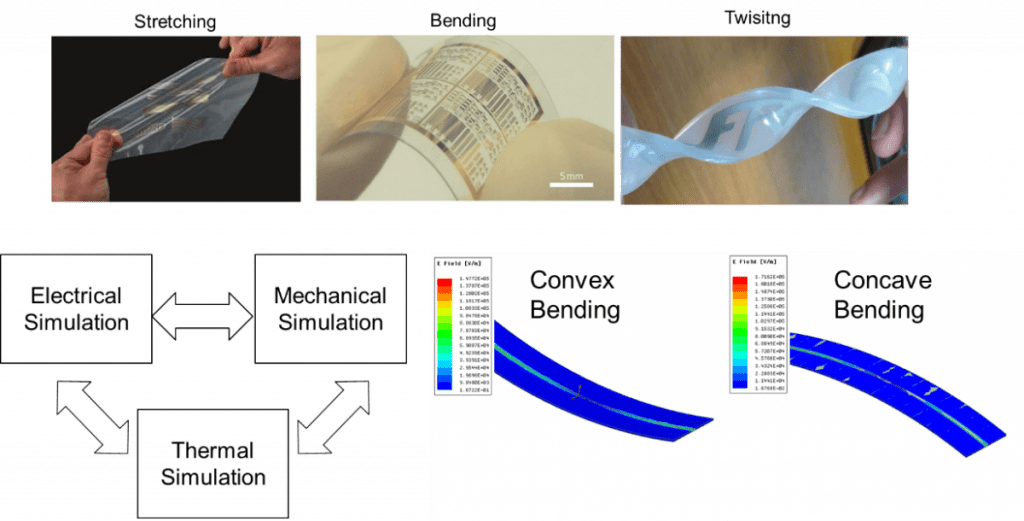 VISION
VISION
There is a trend towards electronics that are flexible, which conform to different surfaces and are amenable to bending, stretching twisting, folding etc. For such electronics to be pervasive, methods for high volume manufacturing coupled with simplicity in design are required. Our vision is to enable FHE through the development of a design framework supported by modeling, characterization and machine learning that leads to automated, fast and accurate design methods.
CHALLENGES
FHE requires the integration of heterogeneous technologies often sourced from several fabricators who have individual expertise in delivering specific processes. For FHE to become pervasive, design cycles need to be short and due to the price points involved, NRE costs need to be low. Due to the need to stretch, bend, twist and fold such electronics, capturing the interaction between mechanical, electrical and thermal domains becomes critical for predicting performance, reliability and other aging effects. These effects can be captured (to a certain extent) using multi-physics modeling tools but more importantly, experimental data gathering is required to address the gaps in current tools. Multi-physics simulations are often times technology specific and as these tools mature, significant technical support may be necessary. Several issues arise during modeling and characterization that include addressing the appropriate operating conditions and making sure that the electrical response resulting from the mechanical loading effects are captured accurately.
TECHNICAL APPROACH
Multi-physics simulations using commercial tools are time intensive and often times do not capture the effects involved. Hence such tools need to calibrated and supplemented through characterization and measurements. Once validated, these tools can be a valuable source of data that can be used to populate process design kits (PDK). Our approach is therefore to develop an open source PDK that contains technology files, pcells, models and structural geometries, similar to an IC process. Such a development can be enabled through open source machine learning (ML) software where all IP can be protected, allowing for complex multi-physics tools to be completely decoupled from the design process. The open source strategy for tool development could then include synthesis (soft/hard IP), layout generation, circuit simulation (for verification), optimization and DRC (both enabled through machine learning) that are compatible with the PDK.
Such a development can be enabled through open source machine learning (ML) software where all IP can be protected, allowing for complex multi-physics tools to be completely decoupled from the design process. The open source strategy for tool development could then include synthesis (soft/hard IP), layout generation, circuit simulation (for verification), optimization and DRC (both enabled through machine learning) that are compatible with the PDK.
Further information on FHE is available here:
Power Delivery and Management in Flexible Substrates for IoT Applications
COLLABORATING FACULTY
• Suresh Sitaraman • Madhavan Swaminathan • Mohamed Bellaredj
INDUSTRY PARTNERS
• Cadence • Hewlett Packard Enterprises • Nextflex • Stanford • UCSB
